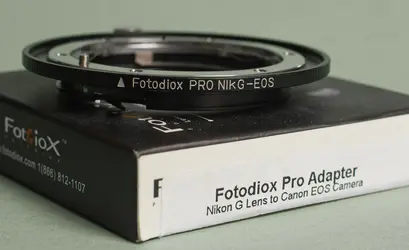I'm not sure someone with a 5D III have at least 4 Canon "L" series lenses is going to be interested in a lens adapter for Nikon's limited lens collection -- but alas the thread isn't about who makes better lenses (*cough* Canon does *cough*).

I think the most significant improvement to how an image looks is through good lighting. To that end, I agree with runnah - I would take a very good look at the Canon 600EX-RT speedlite system.
I have a number of speed lights. I was using the optical system in the 580EX II with my 5D II. But a short while after getting my 5D III I decided to add more lights. At this point Canon had pulled the 580EX II from marketing (once their flagship flash) and replaced it with the new 600EX-RT.
I picked up just one 600EX-RT, liked it... but THEN... I got another. Once I had those, I started to see all the advantages of the new Canon radio technology flash system. This is definitely the front-runner in the industry.
The 5D III (any model that came out in or after 2012 has this) has a greatly improved in-camera menu for external flash control... and since the system now uses radio technology, controlling off-camera lighting is pretty much as easy as controlling on-camera lighting.
Normally remote lighting is a bit of a Rube Goldberg contraption ... either with external studio mono-lights or speed lights that don't have a communication system baked in. So you have to add either optical or radio triggers and receivers, dangle those off the side of the flash and connect a wire to run the light. But the simple single wire is just a manual flash trigger so you lose any TTL capability you might have had. If you want to change anything (power levels) then you pay a visit to each flash and make the adjustment. You can pay the premium for the Pocket Wizard mini/flexTTL combo (NOT cheap) -- but the PocketWizard system isn't nearly as automatic, not as reliable and a bit flakey -- so you put up with the fact that a percentage of your shots are going to miss fire.
Canon's system is radio-based, exceptionally reliable, and extremely versatile and you can control nearly everything from on-camera menus without having to touch the flash (other than to power it on and decide where you want to point it.)
I eventually added an ST-E3-RT -- this is the on-camera radio based commander that controls the rest of the flashes (up to 15 flashes can be controlled at one time). The menu, buttons, LCD display, etc. on the commander are actually identical to the buttons on the flash -- so there's nothing awkward to learn. Linking the commander/remotes is extremely easy -- just one button controls this.
The price point of the new 600EX-RT is barely more than the older 580EX II (which is no longer made) -- which is a bit impressive considering that what you get is sort of like buying a set of E-TTL wireless commander & receivers (which normally would cost about $200 for EACH (a minimum of $400) but this is just "baked in" to the new system -- is vastly more versatile and as well as vastly easier to use.
There is one other "accessory" I really like... a sling strap. If you're doing mostly studio work then you won't see the value of this... but if you're doing field work you'll probably really like it. I own a Black Rapid RS-7 strap, but the Carry Speed brand straps are also extremely good ... both are highly recommended. Factory neck straps are fine for short durations... but if you carry the camera all day long it starts to bother my neck (especially if I've got heavy glass on the camera). The sling straps however... I can (and do) wear all day long with comfort.












![[No title]](/data/xfmg/thumbnail/38/38748-ed31bfa7e0ad498ba3aa5dfbf3666f8d.jpg?1734172603)

